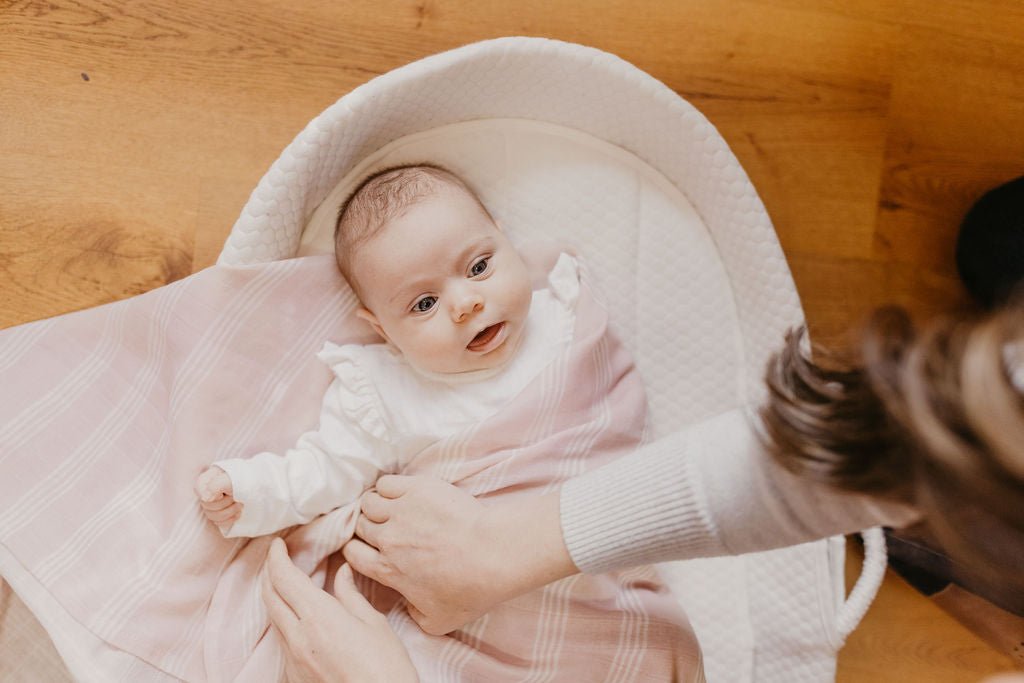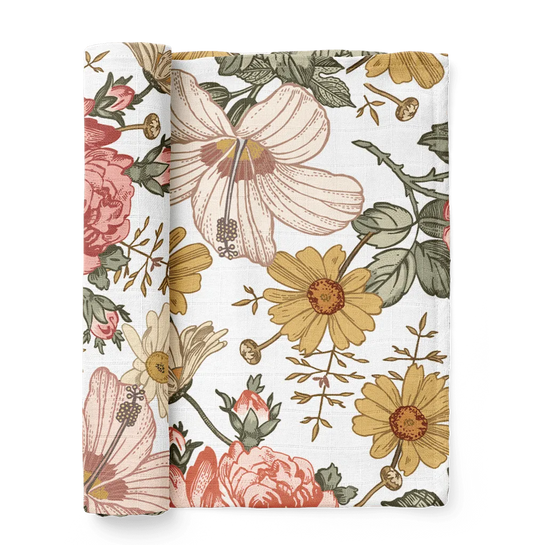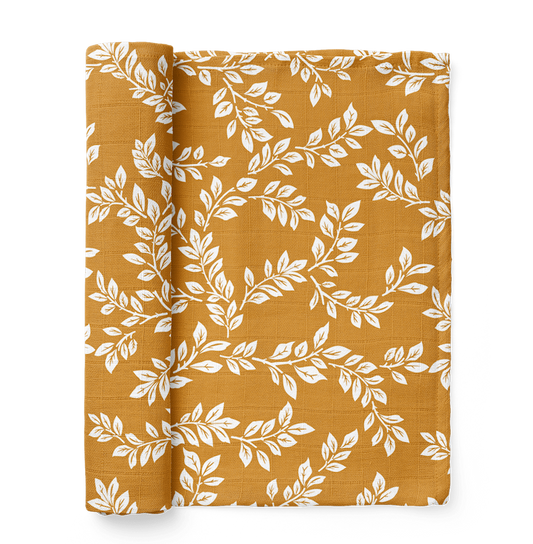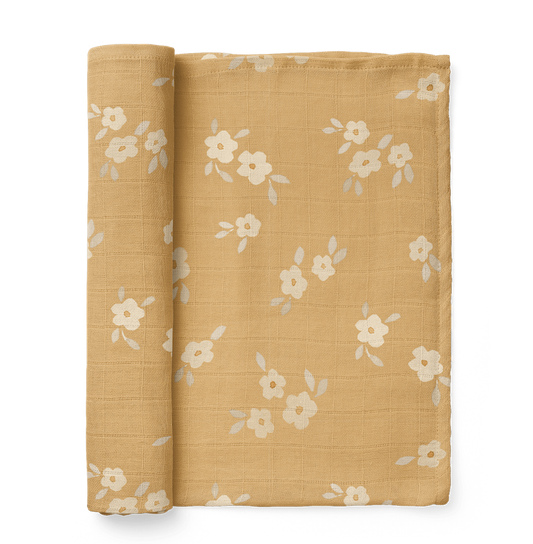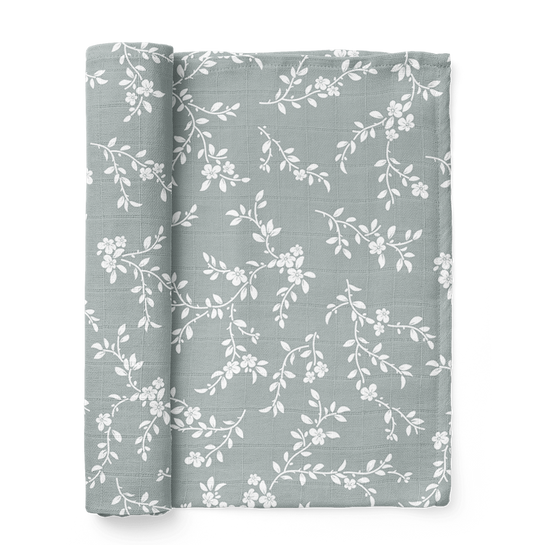Newborn swaddling is a popular technique for comforting and settling newborns. It involves wrapping the baby in a blanket or other fabric, such as a newborn swaddle wrap, in a specific way to help them feel secure and comforted. In this article, we will discuss the benefits of newborn swaddling, how to properly swaddle a newborn, and some tips for successful swaddling. We will also explore some alternatives to traditional newborn swaddling.
Benefits of Newborn Swaddling
Newborn swaddling can have many benefits for your little one. For one, it can help your new baby feel more secure and comforted, as the snug wrapping can mimic the feeling of being in the womb, cozy and warm. Newborn swaddling can also promote better sleep for newborns, as it can help them feel more settled and prevent them from startling awake due to their own movements. Swaddling can potentially help regulate a baby's sleep cycle, especially in cases where infants have their days and nights confused. In addition, newborn swaddling has been shown to potentially reduce the risk of sudden infant death syndrome (SIDS) by keeping the baby in a supine position (on their back).
Reducing Startle Reflex
Newborns often experience a strong startle reflex, which can lead to sudden wake-ups during sleep. Swaddling helps control this reflex, allowing the baby to sleep more soundly.
Promoting Longer Sleep Periods
Swaddling can create a secure and cozy environment for the baby, promoting longer periods of undisturbed sleep. This can contribute to establishing a more regular sleep pattern.
Establishing Sleep Associations
Swaddling, when done consistently as part of a bedtime routine, can become a sleep association for the baby. Over time, they may associate being swaddled with sleep, helping reinforce a nighttime sleep routine.
Enhancing Comfort
The snug feeling provided by swaddling can enhance the baby's comfort, making them feel secure and relaxed. This can contribute to a more peaceful sleep environment.
How to Swaddle a Newborn
Swaddling a newborn is not difficult, but it is important to follow proper techniques to ensure the baby's comfort and safety. Here is a step-by-step guide to newborn swaddling:
- Choose a suitable blanket or newborn swaddle wrap. The blanket should be large enough to wrap around the baby's body, but not too large that it becomes cumbersome. A muslin or cotton blanket is a good choice, as it is soft and breathable.
- Lay the blanket out in a diamond shape and fold it into a triangle.
- Place the newborn in the middle of the blanket with their head above the top.
- Bring the left corner of the blanket over the baby's body and tuck it under the right side of their body.
- Bring the bottom corner of the blanket up and tuck it under the baby's chin.
- Bring the right corner of the blanket over the baby's body and tuck it under the left side of their body.

Tips for Successful Newborn Swaddling
While newborn swaddling can be a helpful technique for comforting and settling newborns, it is important to follow some tips to ensure the baby's comfort and safety. Here are some things to consider:
- Make sure the newborn swaddle is not too tight. The baby should be able to move their hips and legs freely, as restricting movement can lead to hip dysplasia.
- Leave some space for the newborn to move their hips and legs. This is important for proper hip development.
- Avoid covering the newborn's face or head. The baby should be able to breathe easily while swaddled.
- Remember a swaddle adds a layer of warmth. Avoid overheating by using a light and breathable swaddle.
- If your baby is kicking their legs out of the swaddle, try our other swaddle technique that is great for older babies.
Alternatives to Newborn Swaddling
While traditional newborn swaddling with a blanket can be effective, there are also other options available. Swaddle wraps or swaddle sacks are specifically designed for newborn swaddling and can be easier to use than a blanket. Sleep sacks or wearable blankets are another option, as they allow the newborn to move their arms and legs freely while still providing warmth and security.
Conclusion
Newborn swaddling can be a useful technique for comforting and settling newborns. It can help them feel secure and promote better sleep, and may also reduce the risk of SIDS. When looking for the best swaddle for a newborn, one of our favorite options is using a traditional muslin swaddle. Muslin is a soft and breathable fabric that is perfect for a newborn's delicate skin. And as the baby outgrows the need for newborn swaddling, the muslin blanket can still be used for other baby care such as covering the newborn while nursing or as a light blanket for warmer weather.
Frequently Asked Questions About Swaddling Newborns
Can a swaddle be too tight?
Yes, a swaddle can be too tight, even for a newborn. It's important that the swaddle is snug enough to keep the baby still but allows for proper hip movement and is not overly constricting.
How to know if baby is too hot in swaddle?
You can tell if a baby is too hot by observing signs such as sweating, feeling excessively warm to the touch, flushed skin, or if the baby seems irritable and uncomfortable. Use a swaddling blanket that allows air to circulate, like a muslin cotton swaddle. Additionally, ensure that the room temperature is not too high, and the baby is not overdressed.
Should I keep baby swaddled during night feedings?
It's generally recommended to unswaddle a baby during night feedings. This allows for easier access to the baby's diaper and facilitates skin-to-skin contact, promoting bonding and breastfeeding. After the feeding, you can easily burp the baby to prevent spit-up before swaddling them again before bedtime.
Why do babies like to be swaddled?
Babies often enjoy being swaddled because it provides a sense of security, mimicking the snug environment of the womb or the tender arms of the parent. Swaddling can have a calming effect, promote better sleep by reducing the startle reflex, and offer warmth, contributing to a comforting and familiar experience for the baby.
Do I have to swaddle my newborn?
No, you do not have to swaddle your newborn. Swaddling is an optional practice, and whether or not to swaddle depends on your preferences as a parent and your baby's comfort. While swaddling has potential benefits, it's not suitable for every baby, and some infants may not enjoy being swaddled.
Can you double swaddle a newborn?
It is generally not recommended to double swaddle a newborn as it may increase the risk of overheating and restrict the baby's movement. Safe swaddling practices involve using a single layer and ensuring it is not too tight, allowing room for the baby's hips. Consult with healthcare professionals for personalized advice on appropriate swaddling techniques for your baby.
What should newborns wear under a swaddle?
Newborns should wear lightweight clothing under a swaddle to ensure they stay comfortable and avoid overheating. A simple cotton onesie or a bodysuit is a good choice, depending on the room temperature. It's important not to overdress the baby to prevent overheating, and the swaddle itself provides an additional layer of warmth.

